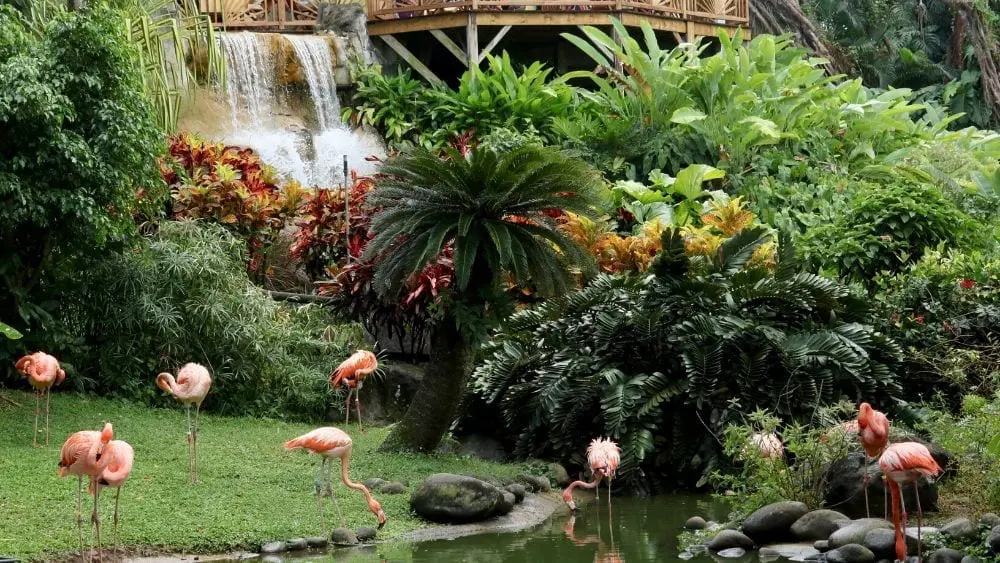
Just as we do indoors, we design our gardens to reflect our style, interests and personality.
Even those who hire designers to help install and keep up their plantings are highly involved in choosing and building features that are focal points in their gardens.
We take pride in having a hand in making our gardens our own. Statement plants or specimen trees, water features, support and shade structures and garden antiques are among the favorite choices that gardeners select when personalizing their gardens.
Wherever I go, I look at gardens. Private ones and public, big and small. Gardens in every possible style and at varying stages of completeness. I learn so much about people and places based on the gardens I see, in part because of the features chosen to make each garden stand out. Some people like statuary and others, topiary. Fountains are prolific, as are sculptural benches. But how do gardeners decide which feature is right for them? That’s as personal as the individual.
Water Features
A few years ago I had the good fortune to tour Bryan Cranston’s Los Angeles garden with his landscaper Jon Goldstein. You know Cranston — he plays the Albuquerque science teacher-turned-meth cooker on Breaking Bad. In reality, he has a softer side that has taken root in his yard.
I was greeted by friendly, down-to-earth Cranston and his wife Robin and their abundant blooming plants in the front yard. Just around the way was a gorgeous waterfall that, to my eye, was the most important part of the garden. It turns out that Cranston designed and built it himself.
Water features are major projects when they’re designed and built from scratch and sadly too many go unfinished.
A client, Randy Gregory of Salisbury, Md., wrote me to ask if I could help him sell some parts to a custom fountain he had started.
“A few years ago, I had a formed, poured concrete fountain built complete with concrete bull-nose edging bought in from California and … I never got around to finishing the project and have since sold the home,” he wrote. “At this point, I would much rather pay for my son’s braces than build another fountain.”
My advice: If you are new to landscaping, buy a ready-made fountain that’s easy to install and forego the custom one until you can hire a design-build firm to deal with it entirely.
Statement Plants
In her latest book, The Tropical Cottage: At Home in Coconut Grove, Beth Dunlop and photographer Claudia Uribe offer a tour of the houses and gardens of Miami’s gorgeous Coconut Grove neighborhood. These homes, which were decorated by the homeowners, are wonderfully detailed both inside and out.
The use of blooming plants that thrive in Florida’s hot, humid weather are a testament to the importance of statement plants and trees. One statement plant that caught my eye was a stunning hot pink bougainvillea at the end of a pathway. It guides the eye with its lushness and color.
Large planters also make great focal points. Consider how an oversized container filled with plants at the corner of a pool or beside patio steps transforms an otherwise boring scenario. It gives the eye something to rest on and brings contrast to the garden.
Specimen trees are a long-lasting way to define your garden. Plant them right and maintain them properly and you can get decades of style and beauty in return. I’ve found that the best way to choose a specimen tree — which can be expensive so make sure it will “take” in your yard — is to visit a local arboretum and see which trees you like best and, of those, which will thrive in conditions most similar to those in your yard.
In the Northeast, Arnold Arboretum has a stunning collection of specimen trees organized into collections. Not only can you enjoy a full day of plant-gawking while you’re there, you’ll also lean oodles of information from the on-site staff. There are arboretums all around the country, but if there isn’t one close to you, visit your town’s parks instead. Most arboretums have websites containing good information that pertains to your landscape.
When it comes time to actually buy your tree, be picky. Arrive at your most trusted nursery with a short list of preferred trees and look closely for disease and insects. Make sure the root ball is healthy and hire a pro to plant your tree, since so much of a tree’s success is in the original planting. Finally — and most important — don’t neglect regular waterings.
Functional Art
Fine outdoor furniture and garden antiques are an investment worth making if you place them correctly. A historic bench that’s tucked away in a secluded space is fine if you’re cultivating a secret garden, but place it where it can be both used and seen to create a true showpiece. Even a unique piece of flea market furniture painted in bold strokes can center the eye in a busy garden.
One of my favorite forms of functional art is the custom, built-in fire pit. In her design for a California client, Laura Morton conceived of a “firestar” as part of the patio.
The project was inspired by the wonderful craftsmanship executed with brick and early California tile that is still found today on Catalina Island. Boston Brick & Stone captured that feeling, bringing in authentic old tile and creating the firestar, which is the centerpiece of the landscape, both visually and socially.
Shade and support structures can be as beautiful as they are functional. Pergolas and trellises are particularly good at establishing the garden’s style genre.
Because they tend to be substantial — and often the largest feature in the landscape apart from trees — these are defining pieces. Build one in bamboo and your garden is suddenly living on island time. Choose an iron trellis for classic style; redwood pergolas are lovely craftsman elements.
A simple and inexpensive gazebo will support flowering vines and, in combination with the plants (jasmine, honeysuckle, clematis), creates a quintessential garden view.
Whatever features you choose for your garden, the placement and materials are what will make it work or not. Spend the time and do your research to select the items that will best express you and create an outdoor environment that’s appealing to you for the long run.

After graduating in 2016 from The University of Texas with a degree in English, Sanda Brown became a content writer for the BDX with a focus on website copy and content marketing.
At the BDX, Sanda helps write and edit articles on NewHomeSource.com, writes website copy for builders, and manages a team of freelancers that work on additional content needs.
 Is the Mortgage Interest Deduction in Jeopardy?
Is the Mortgage Interest Deduction in Jeopardy?